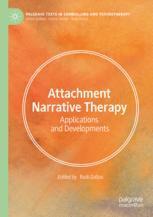It was over 20 years ago that I first started to develop the integration of approaches drawing on systemic therapy, attachment theory, and narra- tive theory and therapy. I had started to notice that many clinicians were employing their own idiosyncratic integrations of therapeutic models. These integrations often appeared to be pragmatic rather than bound by theoretical purity in their integrations. For example, I noticed that people could combine intra-psychic approaches, such as cognitive behavioural therapy or psychodynamic orientations, with systemic work. During the same period I was also writing about formulation and likewise it was clear that formulation could be combined from different models in a theoreti- cally coherent manner or pragmatically. I had also been inspired by the work of Harry Procter (Procter and Winter, 2020) in his conceptual inte- gration of personal construct theory and systemic therapy. However, many clinicians were combining approaches drawn from intra-psychic approaches with systemic therapy. These positions constitute a concep- tual divide and potential schism. Systemic therapy and intra-psychic therapies hold contrasting understandings about the causation and treat- ment of problems, locating them respectively as relational as opposed to within the person
چکیده فارسی
بیش از 20 سال پیش بود که برای اولین بار شروع به توسعه ادغام رویکردهای مبتنی بر درمان سیستمیک، نظریه دلبستگی، و نظریه روایت و درمان کردم. متوجه شده بودم که بسیاری از پزشکان از ادغامهای خاص خود از مدلهای درمانی استفاده میکنند. این ادغامها اغلب عملگرایانه به نظر میرسند و نه محدود به خلوص نظری در ادغامهایشان. به عنوان مثال، متوجه شدم که افراد می توانند رویکردهای درون روانی، مانند درمان شناختی رفتاری یا جهت گیری های روان پویشی را با کار سیستمی ترکیب کنند. در همان دوره من درباره فرمولبندی نیز مینوشتم و به همین ترتیب مشخص بود که فرمولبندی را میتوان از مدلهای مختلف به شیوهای منسجم نظری یا عملی ترکیب کرد. من همچنین از کار هری پروکتر (پروکتر و زمستان، 2020) در ادغام مفهومی نظریه سازه شخصی و درمان سیستمی الهام گرفته بودم. با این حال، بسیاری از پزشکان رویکردهای برگرفته از رویکردهای درون روانی را با درمان سیستمیک ترکیب می کردند. این مواضع یک شکاف مفهومی و شکاف بالقوه را تشکیل می دهند. درمان سیستمیک و درمان های درون روانی دارای درک متضادی در مورد علت و درمان مشکلات هستند و آنها را به ترتیب به عنوان رابطه ای در مقابل درون فرد قرار می دهند
ادامه ...
بستن ...
systemic and narrative approaches. This seemed to constitute a theoreti- cal dilemma in that until that point I had understood attachment theory as constituting a deterministic and largely intra-psychic model. This is a good example of how we can make assumptions about an approach based on what others tell us about it, which I found to be quite different to what Bowlby had actually said in his writings. In fact, it turns out that attachment theory is in a sense a misnomer because it is not one theory but in itself an integrative model. It utilises systemic theory as fundamen- tal to understanding attachment as a behavioural and relational system. It incorporates cognition and narrative in its idea of the ‘working model’ and psychodynamic conceptualisations in its idea of the working model as actively filtering our experiences in terms of defensive processes. As I have developed Attachment Narrative Theory (ANT) over the last 20 years we have held many training events and clinical supervisions where we have out- lined it and discussed its applications. At each of these hundreds of workshops, I have learnt something new from the responses of the clinicians attending. They have shown us how the approach is inevitably adapted and moulded in their own work in different clinical areas. It is hoped that we have been able to weave in some of the richness and excitement resulting from these reactions. It also became evident that the time is now right to give a platform to the creative and inspirational way these colleagues were utilising ANT in their own work. It has therefore been a pleasure to develop this edited compilation of the creative ways in which the ideas have been carried forward. Running through the chapters is the ‘golden thread’ inspired by Bowlby of the need to create with individuals, families and organisations a sense of safety or ‘secure base’ to prepare the ground for the possibility of positive changes. Jacqui Stedmon’s chapter on bereavement reminds us that separation and loss are central aspects of the human experience and of the development of attachment theory. John Bowlby described the loss of people we love through death or the ending of relationships due to separation or divorce as similar to the experience of a bereavement. The chapters include applications where the work is largely conducted with individual clients, as in Myriam Laplanche’s chapter on working with issues of shame. Though the work is typically with individuals, Myriam employs a systemic trans-generational formulation to understand and explore with her clients the nature of their experiences.
ادامه ...
بستن ...










